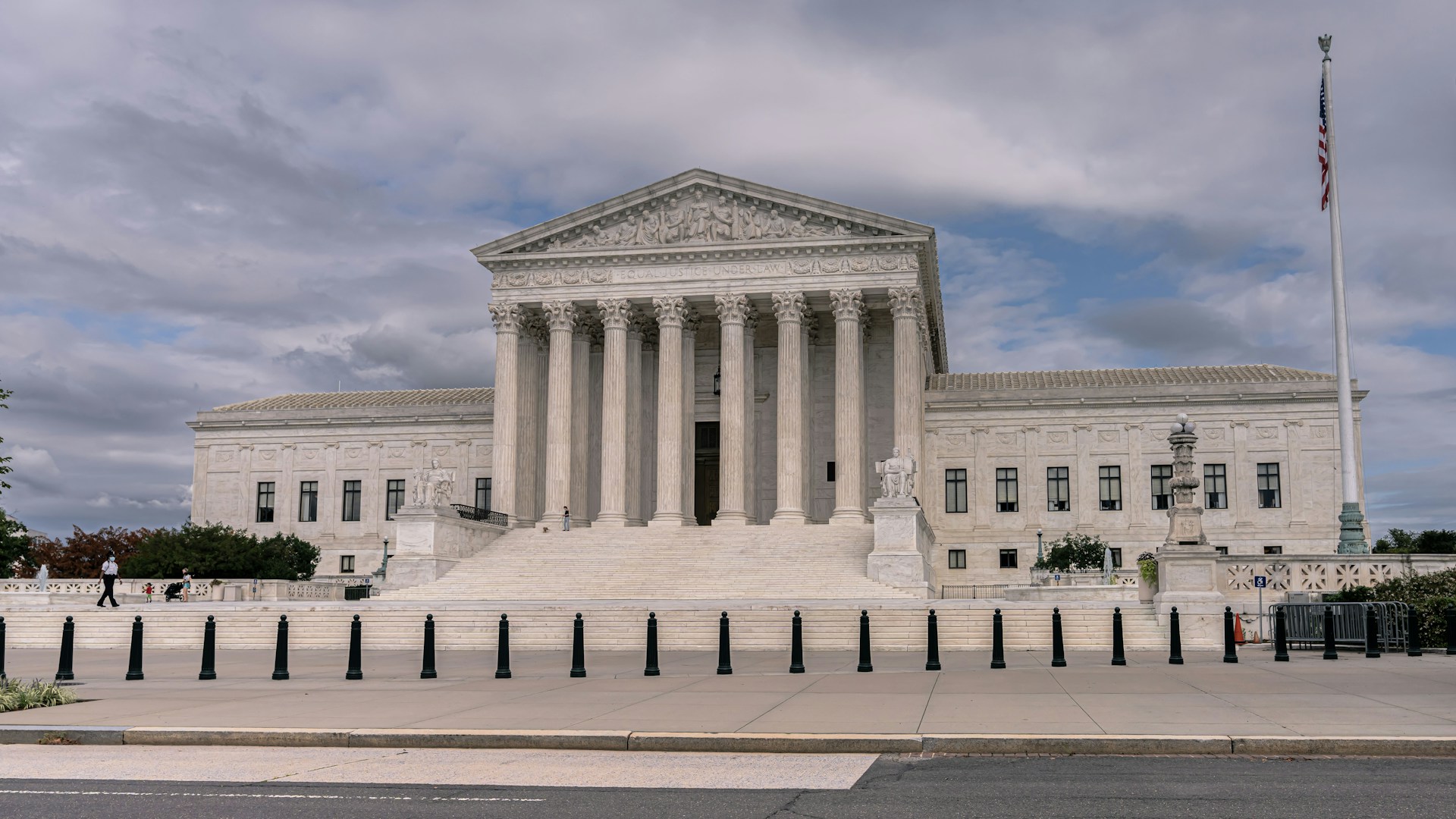Supreme Court allows Trump to fire FTC commissioner


Updated on Oct. 17 at 7:52 p.m.
On Monday, the Supreme Court cleared the way for Trump to fire FTC Commissioner Rebecca Slaughter and agreed to decide on the president’s ability to fire the heads of independent agencies. The case could dramatically upend Supreme Court precedent and give the executive branch much greater authority over federal agencies.
In a brief, unsigned order, the court agreed to take up the case of Rebecca Slaughter, a member of the Federal Trade Commission whom President Donald Trump attempted to fire earlier this year. A federal judge in Washington, D.C., had ordered the Trump administration to allow Slaughter to return to office while her challenge to her termination continues. The justices put that order by U.S. District Judge Loren AliKhan on hold until they issue a ruling in Slaughter’s case, effectively allowing Trump to move forward with firing Slaughter.
Justice Elena Kagan dissented from the decision to pause AliKhan’s order, in a two-paragraph opinion joined by Justices Sonia Sotomayor and Ketanji Brown Jackson. Kagan wrote that her colleagues in the majority had allowed Trump to remove, contrary to federal law, “any member he wishes, for any reason or no reason at all. And he may thereby extinguish the agencies’ bipartisanship and independence.”
Slaughter’s case followed those of Cathy Harris, a Democratic appointee to the Merit Systems Protection Board, and Gwynne Wilcox, a Democratic appointee to the National Labor Relations Board. Like members of the FTC, members of the MSPB can only be removed by the president for “inefficiency, neglect of duty, or malfeasance in office.” Members of the NLRB can only be removed “upon notice and hearing, for neglect of duty or malfeasance in office, but for no other cause.” Harris and Wilcox went to federal court in Washington, D.C., to challenge their firings. Two different federal judges ruled for the officials, ordering the Trump administration to allow them to continue to serve. A three-judge panel of the United States Court of Appeals for the District of Columbia Circuit initially paused those orders, but – by a vote of 7-4 – the full court of appeals reinstated the trial judges’ instructions to allow Wilcox and Harris to remain in office while their challenges continued.
The Trump administration went to the Supreme Court, asking the justices to step in and block the lower courts’ orders in Wilcox’s and Harris’ cases. Over a dissent by the court’s three Democratic appointees, the court granted that request on May 22, allowing Trump to remove the two women.
The majority’s brief, unsigned order in Wilcox’s and Harris’ cases did not address the significance of the Supreme Court’s 1935 decision in Humphrey’s Executor v. United States, holding that although a president can normally fire subordinates for any reason, Congress can create independent, multi-member regulatory agencies – in that case, the FTC – whose commissioners can only be removed “for cause.” The decision to pause the lower courts’ orders, the majority wrote, “reflects our judgment that the Government is likely to show that both the NLRB and MSPB exercise considerable executive power,” a factor that the court has said was not present in Humphrey’s Executor. “The stay also reflects our judgment,” the majority continued, “that the Government faces greater risk of harm from an order allowing a removed officer to continue exercising the executive power than a wrongfully removed officer faces from being unable to perform her statutory duty.”
Slaughter was originally nominated by Trump in 2018 to serve as one of the FTC’s five commissioners. In 2023, then-President Joe Biden renominated her to serve a second term, which is scheduled to end in 2029.
In March, Slaughter and Alvaro Bedoya, another Biden appointee on the FTC, received emails, sent on Trump’s behalf, notifying them that they had been removed from the agency. The emails did not indicate that they had been fired for “inefficiency, neglect of duty, or malfeasance in office.”
Slaughter went to federal court in Washington, where she argued that she had been unlawfully fired because she had not been removed for any of the reasons that would allow Trump to fire her. Citing the Supreme Court’s decision in Humphrey’s Executor, AliKhan ordered the Trump administration to reinstate Slaughter. Acknowledging the court’s order in Wilcox’s and Harris’ cases, AliKhan explained that “any suggestion that Humphrey’s Executor may not extend to other agencies cannot be read as an invitation to sidestep its application to the FTC.”
A divided panel of the U.S. Court of Appeals for the District of Columbia Circuit left AliKhan’s order in place. In the views of Judges Patricia Millett and Nina Pillard, Humphrey’s Executor was “controlling and directly on point.”
On Sept. 4, U.S. Solicitor General D. John Sauer asked the Supreme Court to pause AliKhan’s order while the litigation continues. Slaughter’s case, he said, was “indistinguishable” from those of Harris and Wilcox – whose reinstatements the Supreme Court had blocked in May. Sauer also asked the justices to take up the case and hear oral arguments without waiting for the D.C. Circuit to rule on the government’s appeal.
Four days later, Chief Justice John Roberts temporarily put AliKhan’s order on hold to give the court time to consider the government’s request.
In her filing on Monday, Sept. 15, Slaughter agreed that the Supreme Court should take up her case and hear arguments now, before the D.C. Circuit rules. But she insisted that Humphrey’s Executor continues to apply to her case and bars the president from firing her unless one of the three criteria established by law – “inefficiency, neglect of duty, or malfeasance in office” – is present.
In light of the agreement between the government and Slaughter that the court should take up her case now, lawyers for Harris and Wilcox notified the court that they too had filed petitions asking the justices, if they ultimately decided to grant the government’s request in Slaughter’s case, to weigh in on their cases now, as well.
In a pair of orders on Monday afternoon, the court granted Trump’s request but turned down the petitions from Harris and Wilcox. In its brief order in Slaughter’s case, the court directed the litigants to address two questions: Whether the removal protections for FTC commissioners conflict with the Constitution’s allocation of powers among the branches of government “and, if so, whether Humphrey’s Executor … should be overruled”; and whether, even if government officials like Slaughter are improperly removed from office, federal courts have the power to order their reinstatement or retention. The case will be argued during the justices’ December argument session, which begins on Dec. 1 and concludes on Dec. 10.
In her dissent, Kagan noted that under Humphrey’s Executor, “the President cannot, as he concededly did here, fire an FTC commissioner without any reason. To reach a different result,” Kagan wrote, “requires reversing the rule stated in Humphrey’s.” Although her colleagues in the majority “may be raring to take that action,” Kagan suggested, until they actually overturn Humphrey’s, it is still good law. “Our emergency docket,” she concluded, “should never be used, as it has been this year, to permit what our own precedent bars. Still more, it should not be used, as it also has been, to transfer government authority from Congress to the President, and thus to reshape the Nation’s separation of powers.”
The court did not provide any explanation for its decision not to take up Harris’ and Wilcox’s cases at this time. They will continue to move forward in the lower courts.
Posted in Court News, Emergency appeals and applications
Cases: Trump v. Slaughter (Independent Agencies), Trump v. Slaughter